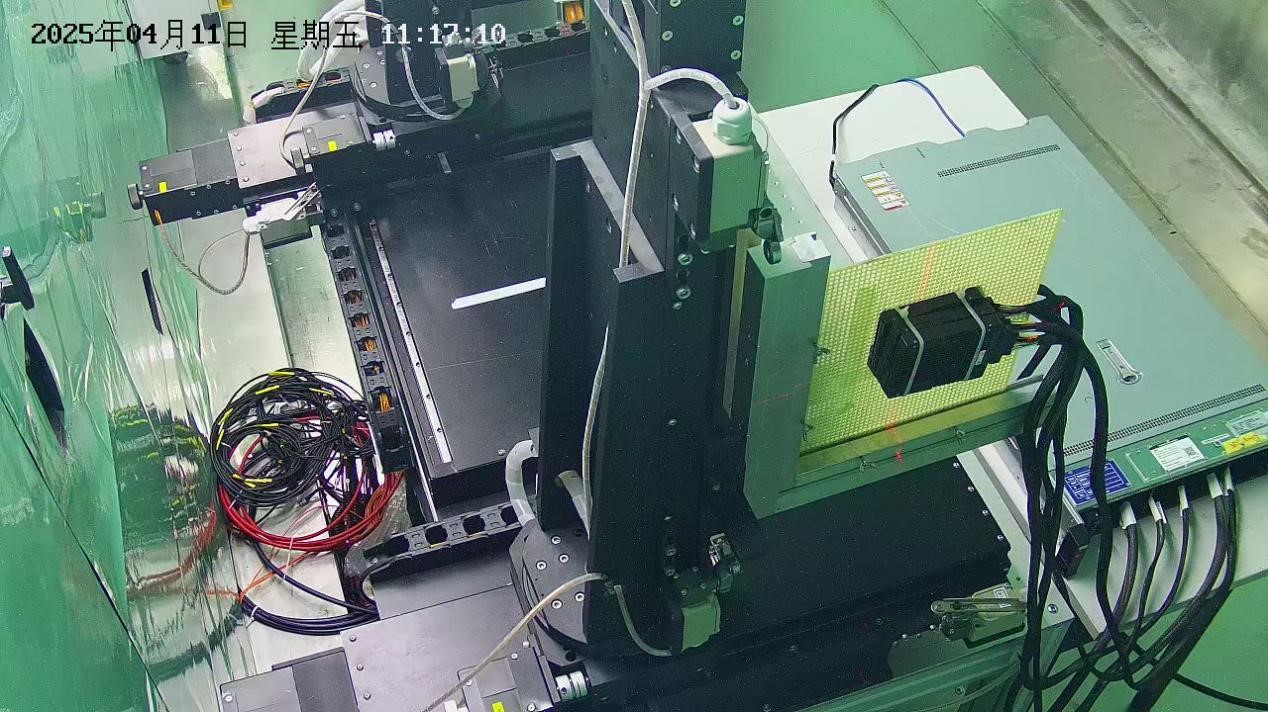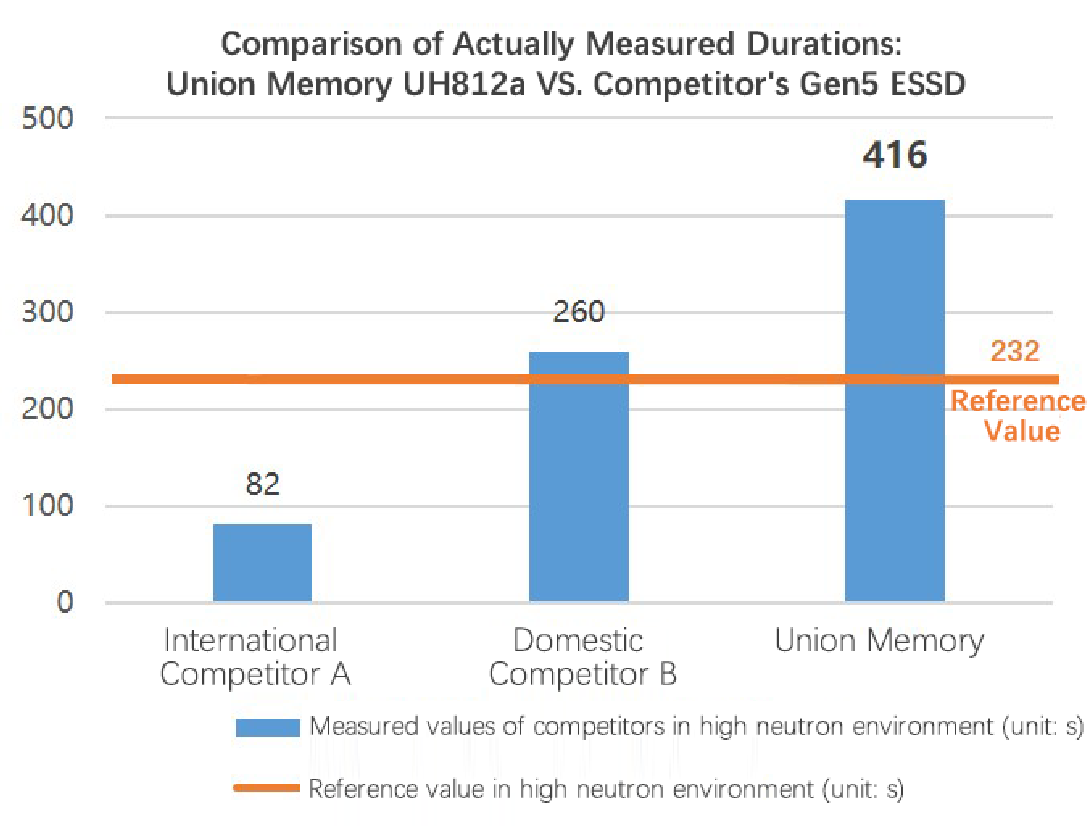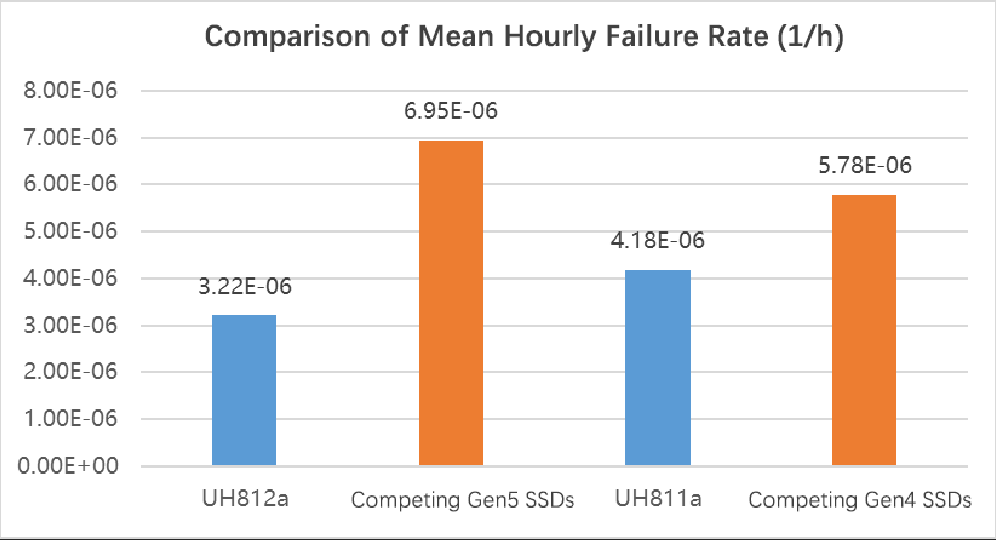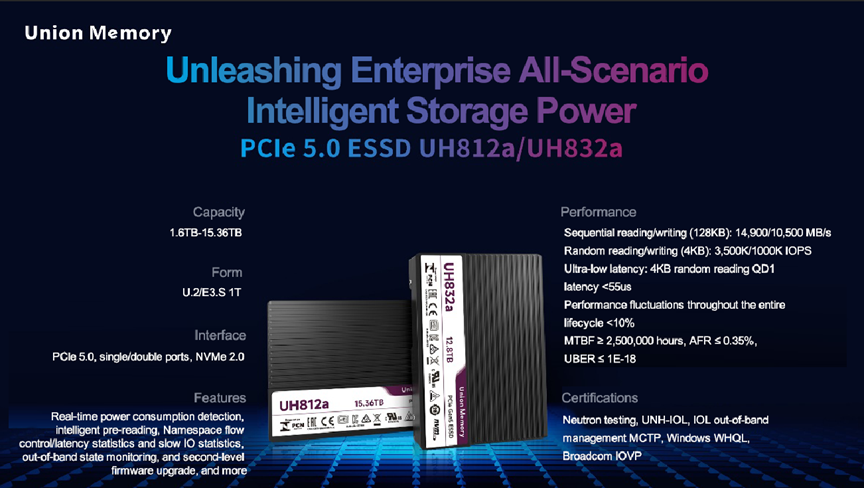
Date: Jun. 30, 2025 Read: 426
Share:




In the digital era driven by artificial intelligence, the efficient storage and rapid retrieval of massive data have become the core pillars of AI applications. From the real-time data processing of intelligent recommendation systems to the parameter training of deep learning models, solid-state drives (SSDs), with their outstanding reading/writing speeds and stability, are becoming the key components of AI infrastructure. However, what is less known is that in the microscopic world, the bit flipping problem caused by neutron radiation is quietly threatening the data security and system stability of AI.
1. Test Background and Environment
1.1 Test Background
Neutrons, as uncharged subatomic particles, are widely present in cosmic rays, high-altitude areas, areas around nuclear power plants, and similar environments. When these tiny particles penetrate into the storage units of SSDs, they may cause unexpected flipping of the bit values in the storage chips, transforming originally stored "0" into "1" or originally stored "1" into "0". This seemingly insignificant change, in the massive data processing scenarios of AI applications, may lead to data errors, model training deviations, and even system crashes, seriously affecting the reliability and efficiency of AI applications.
Union Memory, as the only SSD manufacturer in China that has passed the neutron irradiation test with high scores, collaborated with a well-known domestic institution, China Spallation Neutron Source, to measure the high reliability of the PCIe Gen5 ESSD UH812a in a simulated environment far exceeding the surface neutron radiation levels, in hope of providing a safer and more efficient storage solution for the AI Era.
1.2 Verification Platform
China Spallation Neutron Source is an advanced high-tech multi-disciplinary research platform at the international forefront. The Atmospheric Neutron Irradiation Spectrometer, established at the China Spallation Neutron Source, represents China's first and internationally advanced ground-based simulation accelerator testing platform for atmospheric neutron simulation. It can provide risk assessment and testing services for the single-event effect of atmospheric neutrons for high-reliability electronic components and systems in such fields as aviation, power electronics, intelligent driving, high-performance storage and computing.
1.3 Tested Products
In this test, Union Memory PCIe Gen5 ESSD UH812a and the products of international competitor A and domestic competitor B of the same generation were selected. All the SSDs were continuously irradiated at the same neutron exposure rate until all the SSDs failed.
1.4 Test Environment
The neutron flux rate used in this test was 9.6*104n/ (cm2·s) (En≥1MeV). Under domestic terrestrial conditions, the Ngari Prefecture, one of the areas with the highest neutron flux rates, records only 5.09*102n (cm2 ·h) (En≥1MeV). Thus, it can be seen that in the extreme test simulating the peak environment of cosmic rays (with a neutron flux rate 680,000x higher than terrestrial conditions in the Ngari Prefecture), Union Memory UH812a SSD still maintained excellent stability and reliability, enabling the thousand- GPU cluster to complete the training of billion-parameter AI models, setting a new height for the radiation resistance performance of storage devices.

Fig. 1: Live Photo of the Neutron Test Environment
2. Key Test Results
2.1 Under the demanding conditions of simulated workloads, Union Memory’s UH812a SSD demonstrates significantly longer normal operation duration than competing products.

Fig. 2: Comparison of Actual Measurements between Union Memory SSD and Competing Products
The reference value of 232 seconds is the lifespan of SSD in a high-neutron environment, which is equivalent to the 5-year lifespan of SSD in a normal environment. If, in a high-neutron environment, the actual operating time (measured value) of SSD is longer than the reference value, in indicates that it is stronger in terms of reliability and data protection capability. In this test, the actual operating time of Union Memory UH812a was 416 seconds, which was approximately 60% longer than that of domestic competitors B's similar products and approximately 400% longer than that of international competitor A's similar products. Under the simulated neutron flux conditions, the normal operating time of SSD needs to reach 232 seconds to achieve a 5-year lifespan. The average operating time of Union Memory UH812a was 79% longer than the equivalent time of the 5-year lifespan, which can clearly meet the users' requirements for the durability and reliability of SSD in a high-neutron environment.
2.2 In a high-neutron flux environment, the mean hourly failure rate of Union Memory UH812a SSD is much lower than that of the previous generation products.
The mean hourly failure rate refers to the probability of SSD failing within a unit time (per hour), reflecting the frequency of failures of SSD during operation. A lower value for this indicator indicates higher reliability of SSD.

Fig. 3: Comparison of Mean Hourly Failure Rates Between UH812a and the Previous Generation Products and Competing Gen5 SSDs
Under the test environment of high neutron flux rate, by measuring the failure rates of UH812a and the previous generation products, it can be clearly observed that the failure rate of UH812a is not only lower than that of the previous generation products, but also much lower than that of the competitor's products of the same generation. The UH812a demonstrates a mean hourly failure rate of 3.22E-06 per drive per hour, compared to 4.18E-06 for previous-generation products and 6.95E-06 for competing Gen5 SSDs. This indicates that under normal usage conditions, whether compared with competitor's products or with the previous generation products, UH812a has a lower possibility of failure, and can provide users with more stable and long-lasting storage services, effectively ensuring the security of data and the continuity of operations.
3. Union Memory UH812a SSD incorporates multiple data protection technologies to safeguard the data security of AI applications
In addition to having excellent hardware configuration, Union Memory UH812a also adopts enhanced LDPC error correction algorithm, intelligent error detection and correction (ECC) mode, and uncorrectable error (UNC) protection mode to build a solid AI data security defense line for users.
l LDPC Error Correction Algorithm: It can provide higher error correction capability than as required for Flash chips, accurately identify and correct various errors that occur during data transmission and storage, achieving an UBER (uncorrectable bit error rate) less than 1E-18.
l ECC Mode: It can monitor the state of stored data in real time, quickly locate and correct bit flip errors caused by neutron radiation, effectively ensuring the accuracy of data reading/writing.
l UNC Protection Mode: With intelligent error identification and rapid isolation technology, when facing uncorrectable errors, it isolates the error area to prevent further damage and loss of data, providing comprehensive protection for the stable operation of the system and the continuity of operations.

Fig. 4: Highlights of Union Memory UH812a
UH812a, as one of the flagship PCIe Gen5 ESSDs launched by Union Memory, adopts multiple data protection technologies. When facing the threat of neutron radiation, it can minimize the risk of data loss. With a comprehensive data protection strategy covering all scenarios and the entire lifecycle, it builds an impregnable storage security barrier for AI operations such as large model training and intelligent decision-making.
4. The data protection solution in a neutron radiation environment ensures both data security and efficiency, effectively reducing the total cost of ownership (TCO) for users.
Affected by such factors as policy and natural environment, data centers are increasingly locating in high-altitude areas. Data centers, as the fundamental support for AI development, not only provide massive storage space but also offer strong computing power for AI model training and inference, accelerating the training process. In high-altitude environments, data centers and AI applications are highly likely to be affected by neutrons, resulting in data errors, model training deviations, and distorted analysis results, causing waste of manpower, material, and time resources, and increasing operating costs.
For users, adopting ESSDs that have passed atmospheric neutron tests in high-altitude data centers means empowering both data security and operation efficiency. With its outstanding data protection capabilities, Union Memory UH812a can effectively reduce SSD failure rates, ensure the stable operation of intelligent decision-making systems, intelligent customer services, and other AI applications, guarantee the authenticity and integrity of data, reduce operation and maintenance costs and manpower, and effectively lower the TCO for users.
In the AI-driven intelligent era, choosing Union Memory UH8 series SSDs that have undergone rigorous atmospheric neutron tests means choosing a more stable system operation, more accurate data analysis, more efficient operation progress, and lower operation and maintenance costs, and this will lay a reliable foundation of digital transformation and technological innovation for enterprises.
In the future, Union Memory will continue to be engaged in the field of AI storage technologies, continuously innovate, and constantly optimize its product performance, providing safer, more efficient, and more reliable solutions for data storage needs in the AI Era, and working with customers to build the data foundation of the intelligent era.
Note: All the test data herein are based on the actually measured data under the radiation environment of the atmospheric neutron irradiation spectrometer of China Spallation Neutron Source. The test objects include Union Memory SSDs and the same-generation products from major domestic and international competitors. The relevant data are for reference only.
None.
Union Memory & H3C Set New SPEC Benchmark Record, Redefining Enterprise Storage Standards